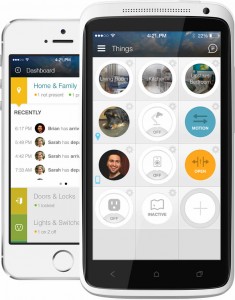What is a home automation system and what does it do? A home automation system is a network of sensors, controllers, switches, interfaces and devices that allow a person to have control over the devices connected to the network, including responses to certain events.
A home automation network can be wired, wireless (WiFi) or a combination of both. A home automation network is controlled via a software interface and most systems in use today use software that can be accessed via a personal computer, tablet or smartphone.
Basic system information

The basic components of a home automation system include:
1. Controller – This is the brains
2. Devices – These are the things that are controlled with your system. Lights, security systems, curtains, thermostat, etc. The devices communicate using specific ‘protocols’ on a network (think of that as a language). So, you will have to use devices that use the same protocol. There also are add-on devices in some systems that can be plugged into outlets or screwed into bulb sockets, for example. These allow home automation systems to control lamps or other plug-in appliances.
3. Interface – This where you can interact with your system. It could be a keypad, smart phone, tablet or TV.
4. Network – This is where everything on your system can communicate with the controller. A number of network technologies are available, including hardwired (wires in the walls), WiFi (wireless networking), electrical wiring, infra-red or radio frequency.
What is a home automation system hub?
In the last year or so we’ve seen some new devices become available, which are home automation hubs. These smart home hubs allow a person to control a number of devices that can use different protocols to communicate together. Some current examples of these hubs include SmartThings, Revolv, Vera Lite and Insteon.
Essentially, these hubs allow the average person with limited experience to setup a home automation network relatively quickly and easily add new devices to the network as times goes on.